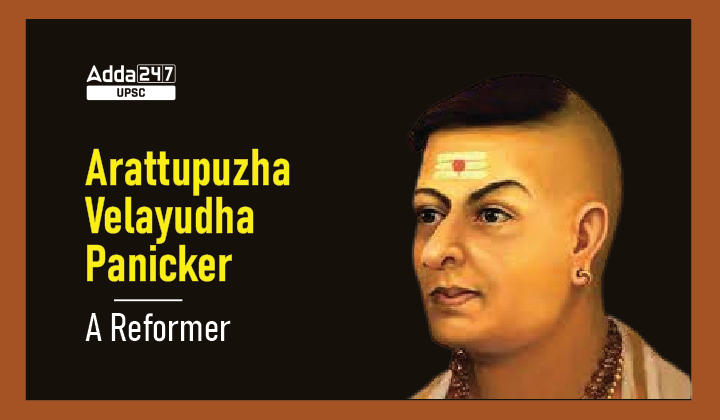Table of Contents
Arattupuzha Velayudha Panicker- A Reformer- Relevance for UPSC Exam
General Studies I- Modern Indian History.
In News
A recently-released Malayalam film Pathonpatham Noottandu (‘Nineteenth Century’) is based on the life of Arattupuzha Velayudha Panicker, a social reformer from the Ezhava community in Kerala who lived in the 19th century.
Who was Arattupuzha Velayudha Panicker?
- Born into a well-off family of merchants in Kerala’s Alappuzha district, Panicker was one of the most influential figures in the reformation movement in the state.
- He challenged the domination of upper castes or ‘Savarnas’ and brought about changes in the lives of both men and women.
- The social reform movement in Kerala in the 19th century led to the large-scale subversion of the existing caste hierarchy and social order in the state.
- Panicker was murdered by a group of upper-caste men in 1874 at the age of 49. This makes him the ‘first martyr’ of the Kerala renaissance.
Panicker’s role in initiating social reforms
- Panicker is credited with building two temples dedicated to the Hindu god Shiva, in which members of all castes and religions were allowed entry.
- One was built in his own village Arattupuzha in 1852, and one in Thanneermukkom in 1854, another village in the Alappuzha district.
- Some of his most significant contributions were in protesting for the rights of women belonging to Kerala’s backward communities.
- In 1858, he led the Achippudava Samaram strike at Kayamkulam in Alappuzha.
- This strike aimed to earn women belonging to oppressed groups the right to wear a lower garment that extended beyond the knees.
- In 1859, this was extended into the Ethappu Samaram, the struggle for the right to wear an upper body cloth by women belonging to backward castes.
- In 1860, he led the Mukkuthi Samaram at Pandalam in the Pathanamthitta district, for the rights of lower-caste women to wear ‘mukkuthi’ or nose-ring, and other gold ornaments.
- These struggles played an important role in challenging the social order and in raising the dignity of women belonging to the lower strata of society in public life.
Other social work
- Apart from issues related to women, Panicker also led the first-ever strike by agricultural labourers in Kerala, the Karshaka Thozhilali Samaram, which was successful.
- He also established the first Kathakali Yogam for the Ezhava community in 1861, which led to a Kathakali performance by Ezhavas and other backward communities, another first for them.




 TSPSC Group 1 Question Paper 2024, Downl...
TSPSC Group 1 Question Paper 2024, Downl...
 TSPSC Group 1 Answer key 2024 Out, Downl...
TSPSC Group 1 Answer key 2024 Out, Downl...
 UPSC Prelims 2024 Question Paper, Downlo...
UPSC Prelims 2024 Question Paper, Downlo...
